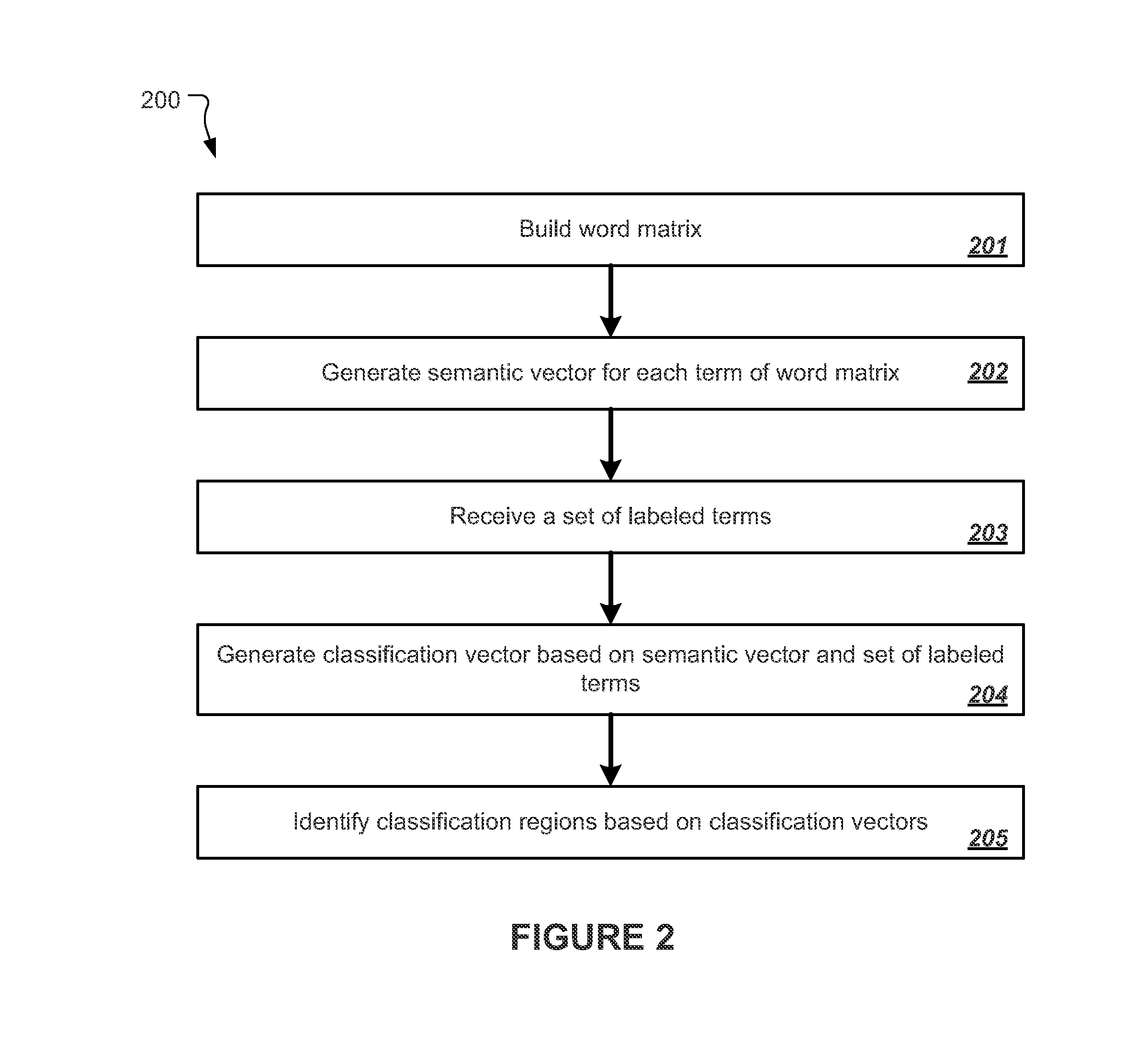Classifying data using machine learning
- Summary
- Abstract
- Description
- Claims
- Application Information
AI Technical Summary
Benefits of technology
Problems solved by technology
Method used
Image
Examples
Embodiment Construction
[0023]In a general embodiment of the present disclosure, an adaptive learning machine uses unsupervised learning and supervised learning to classify data. The data represents an entity, such as a person, place, thing, data record, word, or the like. For unsupervised learning, the adaptive learning machine uses an external corpus of text documents to build a word matrix. The word matrix is a term-to-term similarity matrix generated using semantic similarity and / or string similarity derived from an external corpus of text documents. The word matrix includes nodes and links. A node contains a term, and a link connects two or more nodes and defines a semantic proximity or a string similarity between the terms in the linked nodes. For supervised learning, the adaptive learning machine receives a set of terms that have been labeled with the correct classifications. The adaptive learning machine uses the word matrix, the set of labeled terms, and / or additional attributes associated with th...
PUM
 Login to View More
Login to View More Abstract
Description
Claims
Application Information
 Login to View More
Login to View More - R&D
- Intellectual Property
- Life Sciences
- Materials
- Tech Scout
- Unparalleled Data Quality
- Higher Quality Content
- 60% Fewer Hallucinations
Browse by: Latest US Patents, China's latest patents, Technical Efficacy Thesaurus, Application Domain, Technology Topic, Popular Technical Reports.
© 2025 PatSnap. All rights reserved.Legal|Privacy policy|Modern Slavery Act Transparency Statement|Sitemap|About US| Contact US: help@patsnap.com



